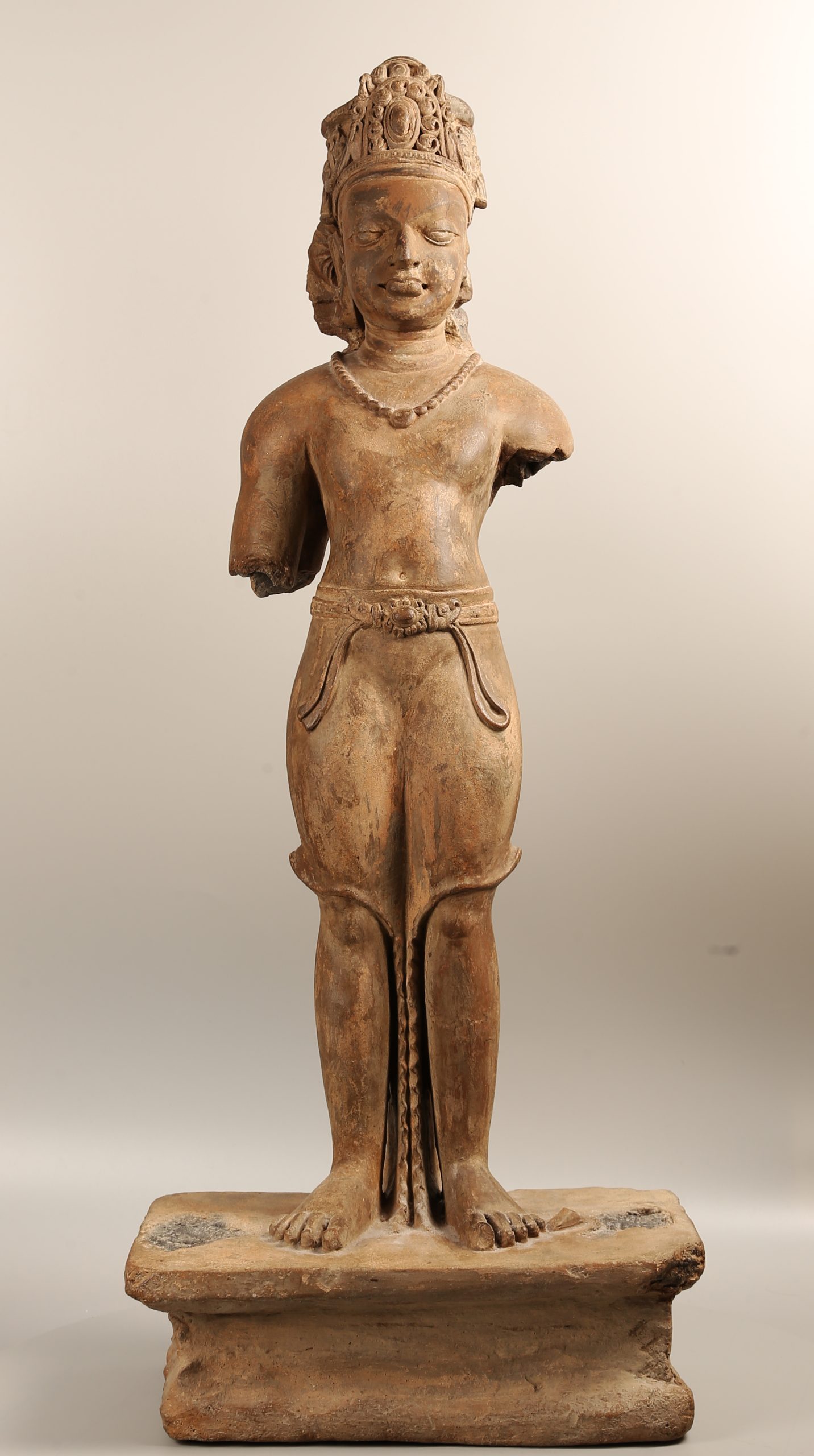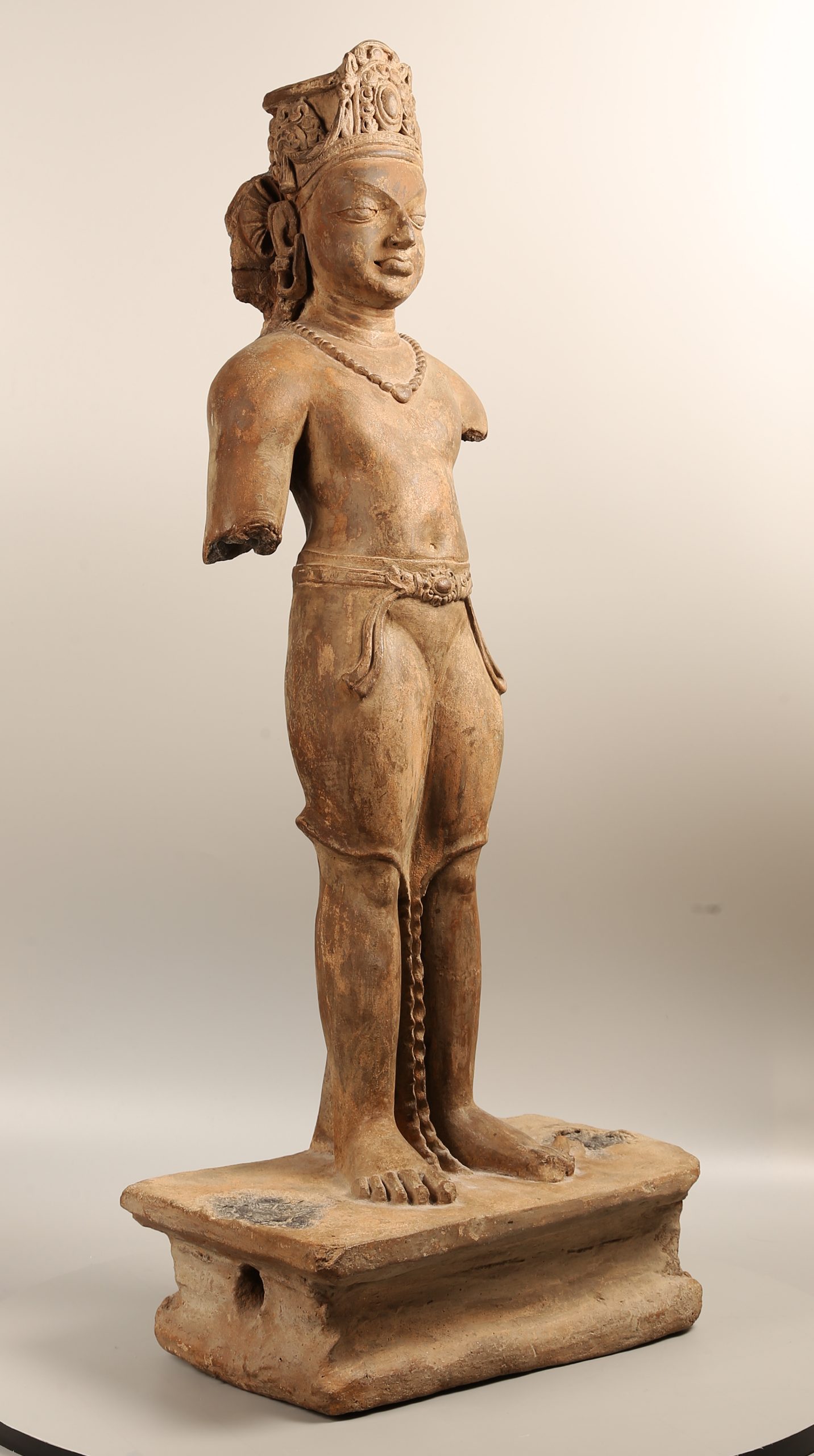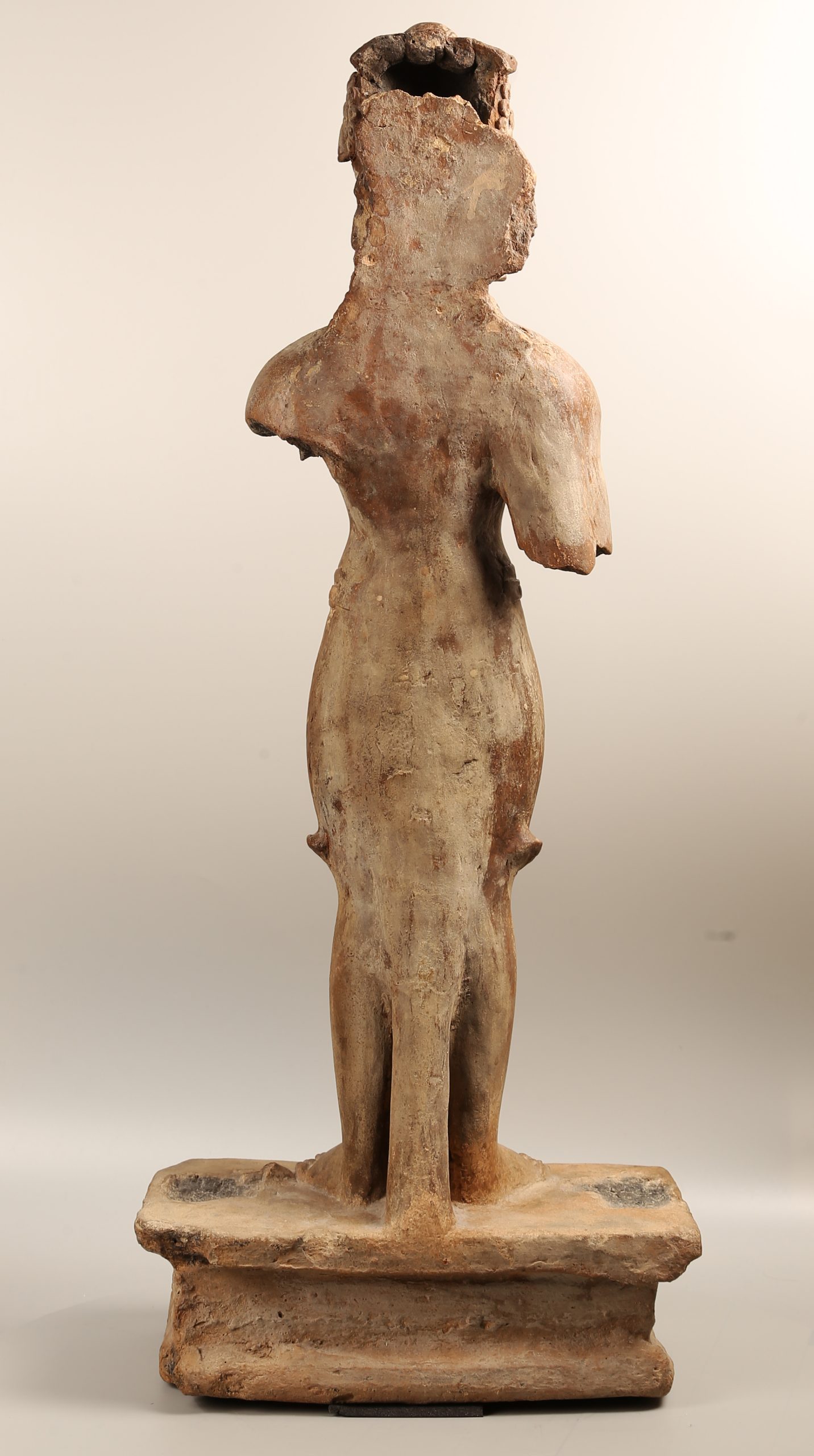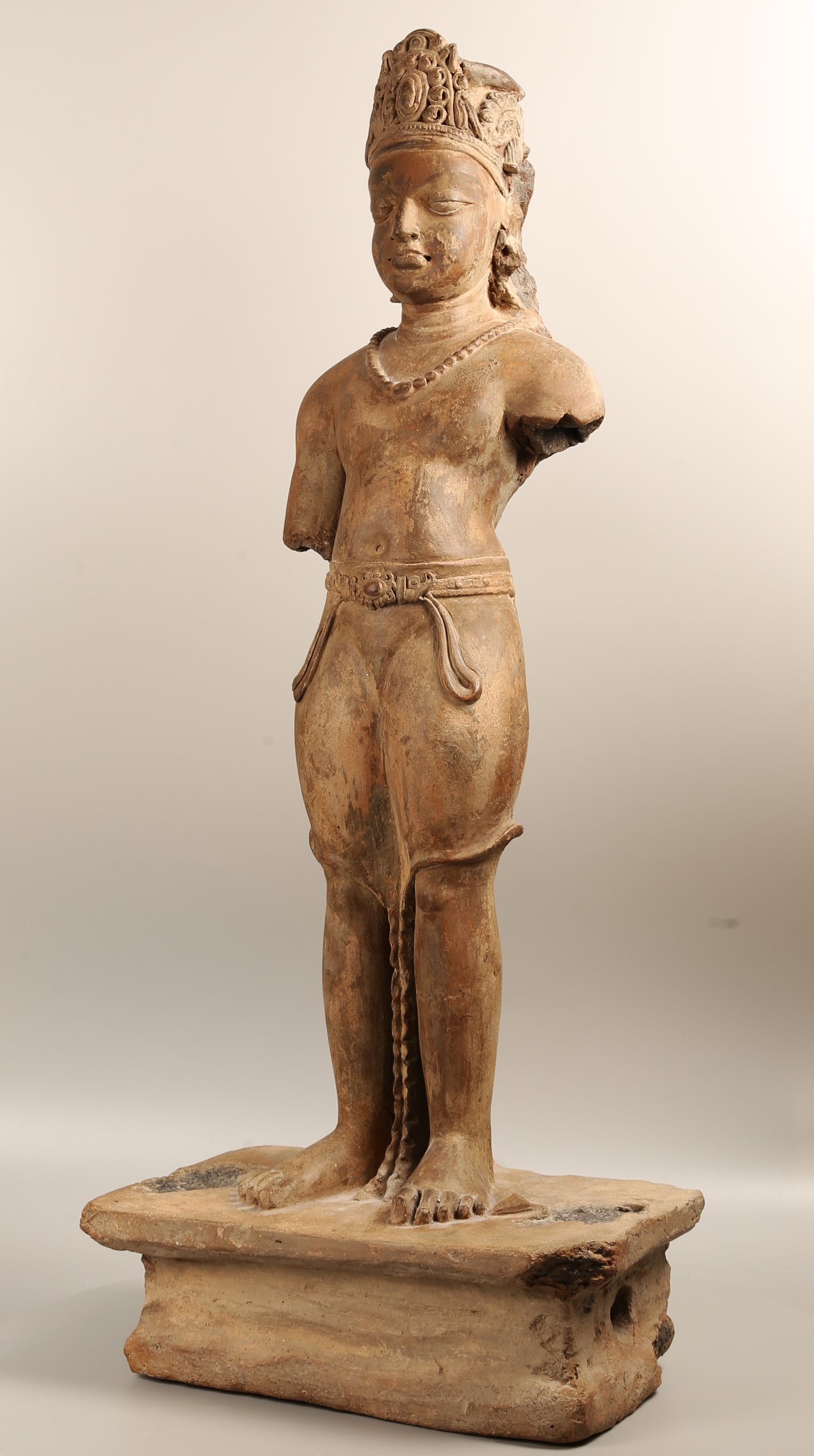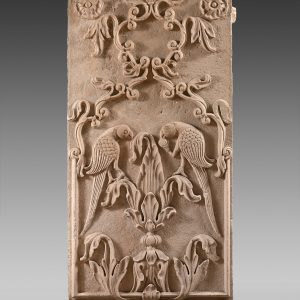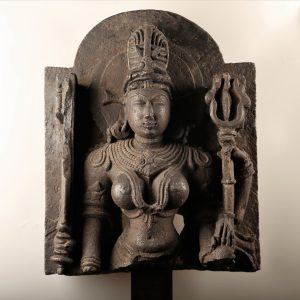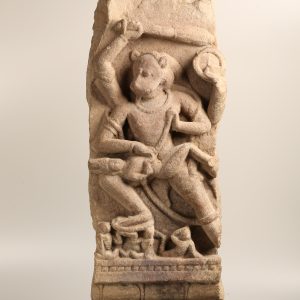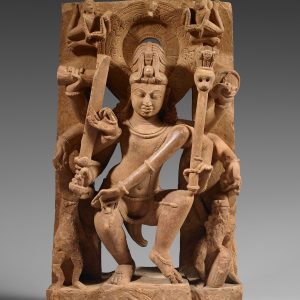Standing deity
40 000,00€
Terracotta
4th-5th century, Gupta period
India
H. 74 cm or 29 inch
360° view
Description
A divine statuette
The divinity is represented here in full-length; it is worth noting the rarity of this high degree of conservation for a terracotta statuette. Here the deity wears a serene, deceptively indolent expression, while her full lips seem to be smiling playfully. Heavy eyelids fall on her almond-shaped eyes, surmounting a straight and thin nose. Despite the absence of some of his attributes, it can be assumed that he is the god Viṣṇu. A richly decorated diadem surmounts the head of the god, giving him a majestic aura. Several ornaments punctuate the body of the deity. The modelling is soft, naturalistic, the body is youthful and slender, as required by the Gupta canon.
The Golden Age of Indian Art
Indeed, the Gupta period is often referred to as the golden age of Indian art. The important development of art and literature, as well as the emergence of numerous regional workshops, gave rise to a taste for ornamentation and for the refined character of representations. A true aesthetic awareness was born; Gupta art is the result of a conceptualised and codified beauty, with the establishment of a canon of beauty.
On the other hand, terracotta, abundant and flexible, was a material of choice for artists, as this piece shows. It was given a major decorative role, particularly in the ornamentation of temples and stupas, entirely covered with sculptures, pillars and lintels. Terracotta was used for both secular and religious representations, and this work therefore belongs to the second category.
A witness to Gupta art
In fact, Gupta art has often come down to us in religious form; this is probably due to the quality of execution and the particular care given to this type of work. The softness of the features and their atypical elegance is characteristic of this period, as is the richness of the ornamentation and jewellery. The use of terracotta, which gradually declined afterwards (with the exception of the Bengal region), is also very characteristic of this period. The degree of preservation of this work should also be emphasised, despite the apparent fragility of the terracotta.
Provenance : Private french collection.

